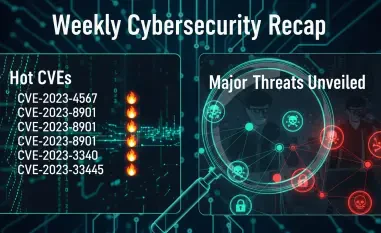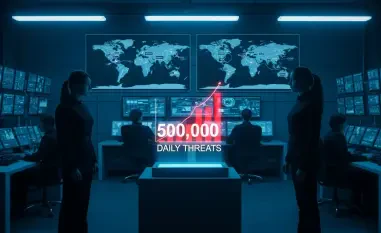In a world where digital collaboration tools are the backbone of modern enterprises, a hidden battle unfolds as cybercriminals exploit trusted systems to infiltrate sensitive networks, leaving organizations vulnerable. Picture a telecommunications giant in the Middle East or a university in the United States, both unaware that their Microsoft SharePoint servers—platforms meant to streamline workflows—have become gateways for espionage. Chinese threat actors are orchestrating a sprawling campaign, targeting organizations across continents by leveraging critical flaws in this widely used software. This isn’t just a technical glitch; it’s a calculated assault on global security, raising urgent questions about how safe digital infrastructures truly are.
The significance of this cyber espionage wave cannot be overstated. With SharePoint serving as a repository for sensitive data in countless organizations, its vulnerabilities pose a direct threat to national security, economic stability, and intellectual property. From African government agencies to European financial firms, the diversity of targets reveals a chilling reality: no sector or region is immune. This campaign, driven by sophisticated hacking groups, underscores the need for immediate action and heightened awareness in a landscape where even patched systems remain at risk due to delayed updates or overlooked defenses.
A Hidden War: Unveiling a Worldwide Cyber Espionage Network
Behind the seemingly routine operations of SharePoint lies a silent siege orchestrated by Chinese hacking collectives. These attackers have weaponized a critical vulnerability known as the ToolShell flaw, identified as CVE-2025-53770, to gain unauthorized access to on-premise servers. Despite Microsoft releasing a patch in July, the exploit was used as a zero-day attack tool, catching organizations off guard. The scale of this operation spans multiple continents, with victims including a South American government department and a state technology agency in Africa, highlighting the borderless nature of the threat.
What sets this campaign apart is its stealth and precision. Hackers bypass authentication mechanisms and execute remote code, often without triggering immediate alarms. Their ability to linger undetected within networks suggests a focus on long-term surveillance rather than quick disruption. This approach has allowed them to extract valuable credentials and data from high-profile targets, turning a collaborative tool into a conduit for espionage that challenges the very foundation of digital trust.
The Vulnerability Crisis: Why SharePoint Flaws Threaten Global Stability
SharePoint’s role as a cornerstone of enterprise operations makes it an attractive target for nation-state actors. The ToolShell flaw, though addressed by Microsoft, exposed a harsh truth: vulnerabilities in such platforms are ticking time bombs if organizations fail to act swiftly. Even after patches are released, many entities delay updates due to operational constraints or lack of awareness, leaving systems exposed to exploitation by groups with espionage-driven motives.
The impact of these attacks ripples across industries and geographies. A European finance company and a Middle Eastern government department are among the diverse victims, illustrating how these breaches threaten everything from financial data to state secrets. Reports indicate that delayed patch deployment contributed to over 60% of successful exploits in similar campaigns this year, emphasizing the urgent need for proactive cybersecurity measures to prevent such flaws from becoming global crises.
Inside the Breach: Tactics of Chinese Hackers Targeting SharePoint
Delving into the mechanics of these attacks reveals a multi-pronged strategy employed by groups such as Linen Typhoon, Violet Typhoon, Storm-2603, and Salt Typhoon. Initially, attackers exploit the ToolShell flaw to penetrate SharePoint servers, executing remote code to establish a foothold. This zero-day tactic, used even post-patch, demonstrates their ability to outpace vendor responses and target unprepared organizations with alarming efficiency.
Beyond SharePoint, the hackers employ a range of advanced techniques to deepen their access. They target SQL and Apache servers running software like Adobe ColdFusion through DLL side-loading, while deploying tools such as Zingdoor and ShadowPad for persistent, stealthy control. Additionally, exploits like PetitPotam (CVE-2021-36942) facilitate privilege escalation, enabling full domain compromise. This layered approach ensures they can maintain a presence in networks across sectors as varied as telecom and academia.
The diversity of targets further amplifies the threat. From a U.S. university’s research data to a Middle Eastern telecom’s infrastructure, the attackers show no preference for size or location, focusing instead on strategic value. Their use of living-off-the-land tools minimizes detection, allowing them to blend into normal network activity while siphoning off critical information over extended periods, often unnoticed until significant damage is done.
Expert Analysis: Unmasking the Origins of a Cyber Threat
Cybersecurity researchers have pieced together compelling evidence pointing to Chinese threat actors as the masterminds behind these SharePoint exploits. Symantec’s Threat Hunter Team has identified patterns—such as the use of tools like KrustyLoader and a focus on espionage—that align with known China-nexus campaigns. While definitive attribution remains elusive due to overlapping tactics, the consistency in victim profiles, including governments and telecoms, mirrors past operations tied to groups like Salt Typhoon, also known as Glowworm.
A lead analyst from the team noted, “The sophistication of these attacks, combined with tools historically linked to specific geopolitical actors, strongly suggests a coordinated effort from a single region.” Additionally, connections to ransomware families like LockBit, associated with Storm-2603, hint at a dual motive of espionage and potential financial gain. This convergence of evidence paints a picture of a highly organized threat landscape originating from a common source, intent on exploiting digital weaknesses for strategic advantage.
Fortifying the Frontline: Strategies to Thwart SharePoint Exploits
In response to this persistent danger, organizations must adopt robust defenses to protect their SharePoint environments. First, prioritizing immediate patching is critical—applying Microsoft updates for CVE-2025-53770 and related flaws without delay can close exploitable gaps. Automated patch management systems are recommended to ensure no vulnerability lingers unaddressed, especially given the speed at which attackers weaponize flaws.
Beyond updates, continuous monitoring plays a vital role. Implementing endpoint detection and response tools can flag suspicious activities, such as unauthorized code execution on servers. Strengthening access controls through multi-factor authentication and limiting administrative privileges further reduces the risk of credential theft. Regular audits of third-party software, often used as secondary entry points, are equally essential to eliminate hidden weaknesses in interconnected systems.
Equipping staff with knowledge is another layer of defense. Training IT teams to recognize subtle signs of intrusion, such as unusual network behavior, and conducting frequent incident response drills can sharpen readiness. By fostering a culture of vigilance and preparedness, organizations can transform their approach from reactive to proactive, significantly lowering the chances of falling victim to these stealthy, espionage-focused campaigns.
Reflecting on a Digital Siege: Steps Forward in Cybersecurity
Looking back, the widespread exploitation of SharePoint vulnerabilities by Chinese hacking groups revealed a stark vulnerability in global digital infrastructures. The calculated targeting of diverse entities—from government bodies to educational institutions—demonstrated the far-reaching ambitions of these threat actors. Their use of sophisticated tools and zero-day exploits left a lasting mark on how organizations perceive the safety of collaboration platforms.
Moving forward, the focus must shift toward building resilient defenses through rapid patch adoption and advanced monitoring systems. Collaboration between industries and governments is essential to share threat intelligence and develop unified responses to such campaigns. Investing in cybersecurity training and technologies over the coming years, from now until 2027, will be crucial to outpace evolving tactics. Ultimately, safeguarding sensitive data demands a collective commitment to staying one step ahead of those who seek to exploit digital trust.













